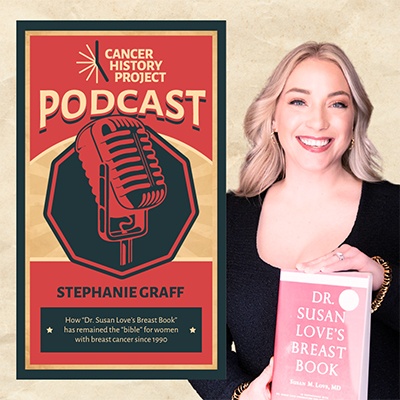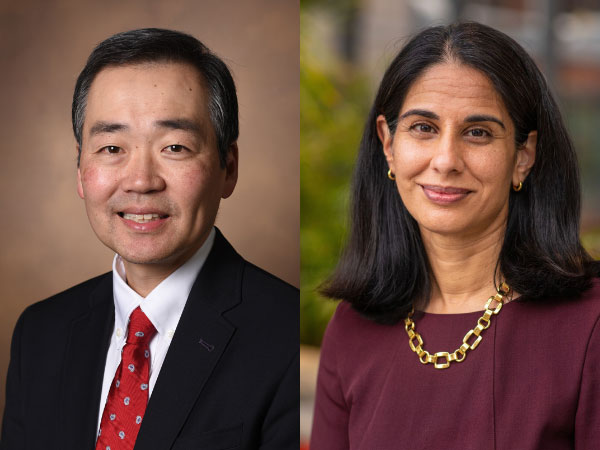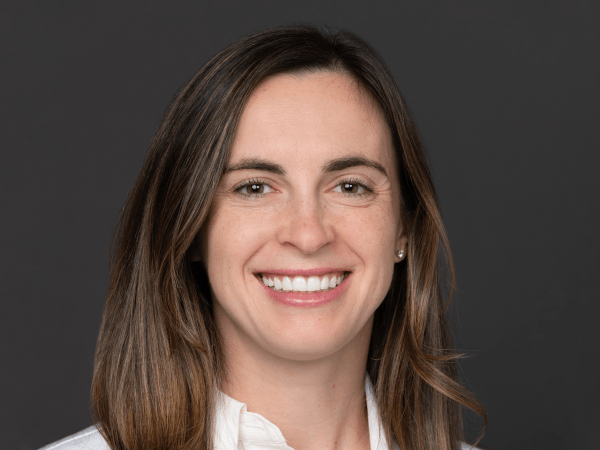When Stephanie Graff was a breast oncology fellow in 2010, one of her patients brought a marked up copy of “Dr. Susan Love’s Breast Book” to an appointment.
“One of my patients had brought it in and was using it almost as her cancer notebook, and had pages flagged and said, ‘Well, what about this? What about this? It says here…,’” Graff, director of Breast Oncology at Lifespan Cancer Institute and medical advisor to Susan Love’s foundation, said to The Cancer Letter. The Dr. Susan Love Foundation for Breast Cancer Research recently merged with Tower Cancer Research Foundation.
It was the first time that the book, written by Susan Love, a breast cancer surgeon, activist, and founder of the Dr. Susan Love Foundation for Breast Cancer Research, had shown up on Graff’s radar.
“Dr. Susan Love’s Breast Book,” which sold a half-a-million copies and was dubbed the “de facto bible for breast cancer patients” in The New York Times, also became an essential part of Graff’s oncology education.
“I actually ended up buying my first copy after that, and read it almost as an adjunct to my breast oncology scientific training,” said Graff, who is also co-lead of the Breast Cancer Translational Disease Research Group at Legorreta Cancer Center at Brown University and associate professor of medicine at the Warren Alpert Medical School of Brown University.
“It ended up providing some foundational knowledge on things that I hadn’t known, or hadn’t been exposed to yet, that allowed me to then dig deeper into the science side of that base knowledge that Dr. Love just outlined so eloquently in the first version of the book that I bought,” she said.


Director of Breast Oncology, Lifespan Cancer Institute;
Co-lead, Breast Cancer Translational Disease Research Group, Legorreta Cancer Center at Brown University;
Associate professor of medicine, Warren Alpert Medical School of Brown University;
Medical Advisor, Dr. Susan Love Foundation for Breast Cancer Research
“Dr. Susan Love’s Breast Book” was first published in 1990. Now, Graff is a contributing author of the seventh edition, the most recent version of the book published in 2023.
The book was also a catalyst for the formation of the National Breast Cancer Coalition (NBCC).
While Susan Love was on tour promoting the book in June of 1990, she encouraged a group of breast cancer advocates in Salt Lake City to march topless to George H. W. Bush’s White House. She didn’t expect to be taken seriously.
“When we said, ‘We should march topless on the White House,’ they were ready,” Love said in a 2021 interview with The Cancer Letter. “The idea of all these topless women marching on the White House was enough to launch the breast cancer advocacy movement.”
At the time, the science and culture of breast cancer activism was changing. People were ready to fight for more breast cancer funding.
“This was, ‘We want to be at the table. We want to be making the suggestions and making sure they happen, not just marching around wearing pink,’” Love said. “Also, most of these activists were not physicians or scientists, or involved in treating or studying breast cancer at all.”
The momentum garnered by Love was channeled into a larger breast cancer grassroots movement, leading to the founding of NBCC—with Fran Visco at the helm—in 1991 (The Cancer Letter, Sept. 10, 2021).
Love died in July 2023, at 75 (The Cancer Letter, July 7, 2023).
What’s the secret to this book remaining so vital that it has withstood seven editions over the span of more than 30 years?
“I’ve now had the privilege to read numerous patient-centered breast texts and none of them have ever been as comprehensive, as thick, as deep into the knowledge and the science as Susan’s work—and subsequent editions and revisions of the ‘Dr. Susan Love’s Breast Book’ have been,” Graff said.
The book challenges the patient to think about their diagnosis and ask questions, Graff said.
“And I found Susan’s colloquialisms, her sayings and expressions, and examples of ways that she converted a complex scientific topic into patient-centered thought, really aligned with my own,” she said.
The book includes a series of “Susan-isms,” Graff said—ideas and terms that traditional texts on breast cancer may not inform the reader about.
“The Susan-ism that I perhaps most intimately burned into my mind, which actually may be more of a result of then going on to work with her, is the concept of collateral damage,” she said. “That if you’re going to do any treatment and it’s going to reduce your risk of breast cancer occurring in the first place, or coming back later by X percent, but there’s an associated risk of Y percent that you’re going to develop numbness and tingling in your fingers and toes that leaves you disabled, or causes you to have joint pain that bothers you mentally and physically every day for five or 10 years. Is the algebraic equation balanced for you?”
The idea of collateral damage involves a nuanced conversation between patient and doctor, Graff said.
“The idea of really pushing back on the scientific community with the harm that cancer therapy can sometimes cause, Dr. Love was pretty revolutionary in saying ‘This isn’t OK, and we have to find ways to do better and be better,’” she said.
Love’s activism and strong belief in patient advocacy ensured the book’s longevity, Graff said.
“That really speaks to who she is, and what she believes and champions, hopefully what I believe and champion, which is really not to underestimate the ability of a patient to learn about and understand their disease from a scientific perspective,” Graff said.
Love became a physician at a time when there were not many women physicians. She became a surgeon in a competitive East Coast environment dominated by men. She married her wife, Helen Cooksey, in 1991. In 1993, they became the first same-gender couple to legally adopt a child—their biological daughter—in the state of Massachusetts.
“And she rejected the idea that women are less-than—and she extended that approach to her own education, and her own career, to the patients who she was caring for,” she said. “It absolutely horrified her that women would go to the operating room not knowing if they had cancer, and wake up with a mastectomy.”
Providing patients with knowledge about their treatment is a crucial part of the book, Graff said.
“And so, engaging patients in the decision around lumpectomy versus mastectomy, and the role of biopsy, to empower a patient to have those discussions and make those decisions, those are all hallmarks of her career,” she said. “And her legacy really involved the San Antonio Breast Cancer Symposium patient advocacy from the inception.”
Over the years, the book has changed, along with the science and language of breast cancer.
“As her evolution as an advocate for the rights of others has evolved, the language in the book has also evolved,” Graff said. “She’s been very intentional about including women of color, including men with breast cancer, in the language of the text.
“The way that those communities are thought about and included, and their particular needs and conflicts, are specifically addressed in the text has evolved over that time too,” she said.
In the most recent editions of the book, Love—along with Graff and Lauren Green, another medical advisor to the book—have revised significantly.
“We each sort of had our brainchild in this edition, revising the chapters on everything from endocrine therapy, to chemotherapy, to chemotherapy side effects, just from the sixth edition to the seventh edition,” she said. “It’s fundamentally different. The way we treat, the drugs we use, the thinking and the approach to neoadjuvant chemotherapy before surgery versus adjuvant chemotherapy after surgery, has completely changed between those two editions.
“I found that there were large sections that were just scrapped and rewriten because so much has changed. I think if you go back to the earliest editions of the book, even things like sentinel lymph node biopsy, or partial breast irradiation, were not mainstream, and were not a part of the routine care of women across the country or across the globe.
“Just seeing that evolution, really seeing the science of survivorship and the science of supportive care change, has been a hallmark from earliest editions to latest editions.”
This column features the latest posts to the Cancer History Project by our growing list of contributors.
The Cancer History Project is a free, web-based, collaborative resource intended to mark the 50th anniversary of the National Cancer Act and designed to continue in perpetuity. The objective is to assemble a robust collection of historical documents and make them freely available.
Access to the Cancer History Project is open to the public at CancerHistoryProject.com. You can also follow us on Twitter at @CancerHistProj, or follow our podcast.
Is your institution a contributor to the Cancer History Project? Eligible institutions include cancer centers, advocacy groups, professional societies, pharmaceutical companies, and key organizations in oncology.
To apply to become a contributor, please contact admin@cancerhistoryproject.com.











